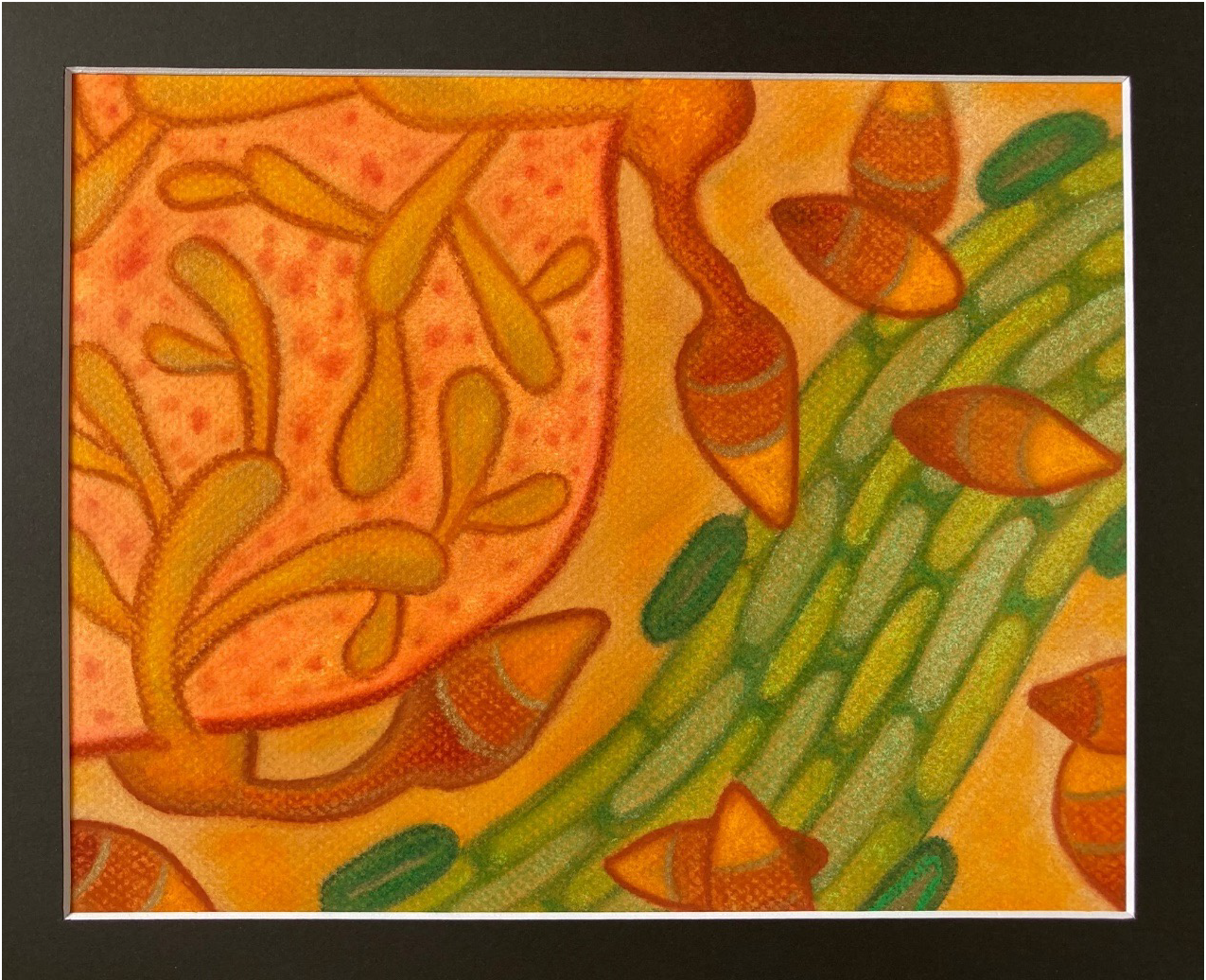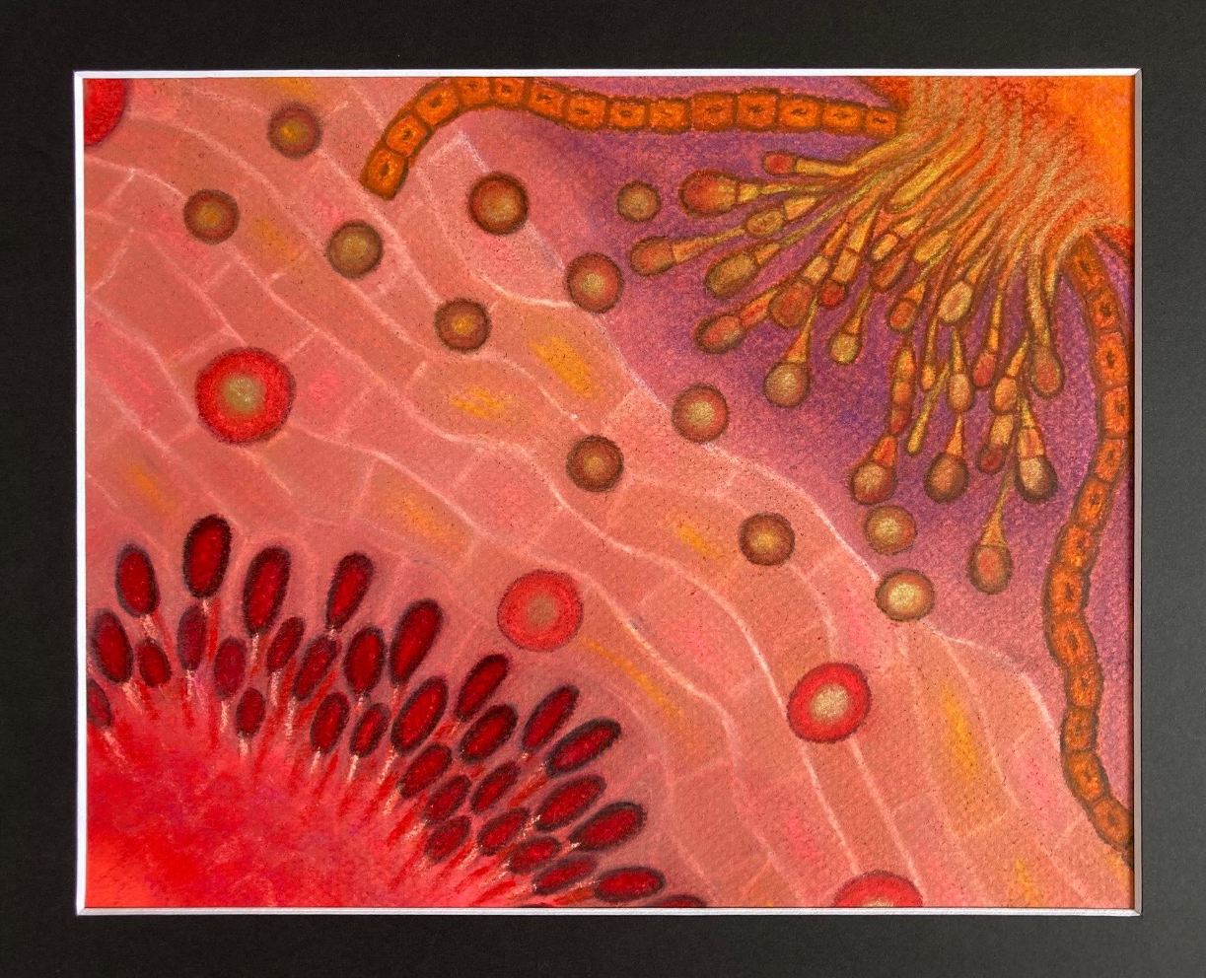October 2022 – Recent publications, preprints and upcoming talks
This month we are celebrating:
- recently published collaborative paper on evolution and function of plant immunity. Congrats Erin!
- new preprint on maize NLRs (includes community accessible CoLab and video tutorial by UCB undergraduate Sanjay Rangavajjhala) in collaboration with Daniil Prigozhin
NB! upcoming talk alert. MPMI Awardee Kyungyong Seong will present his computational structural genomics work at the Virtual MPMI Seminar Series. November 15, 2022 at 10AM CST – Register Now
September 2022 – Congrats Erin and Mark on a new research paper
Congratulations to postdoc from the lab Erin Baggs on new research paper. You can read the press release here: “New findings detail alternative immune pathways in duckweed species“
- Baggs, E.L., Tiersma, M.B., Abramson, B.W., Michael, T.P. and Krasileva, K.V. (2022), Characterization of defense responses against bacterial pathogens in duckweeds lacking EDS1. New Phytol. https://doi.org/10.1111/nph.18453
July 2022 – Congrats Kyungyong on the best grad student author paper, Science art by Dr Lorena Parra
Congratulations to the graduate student Kyungyong Seong for receiving MPMI Graduate Student Paper Award for 2021 for his paper, Computational structural genomics unravels common folds and novel families in the secretome of fungal phytopathogen Magnaporthe oryzae. This award goes to the best paper published in MPMI by a graduate student first author.
“Your approach using structure modeling to identify effector families by their folded shape, rather than amino acid sequence opens up a world of possibilities, not only in identifying new effectors but also in understanding the evolution of effector families and functions, and, in the future, as a tool in immune receptor engineering. In addition, your paper was clearly and logically written, with implications and future uses of this approach clearly visualized and explained.” -Jeanne Harris, Editor in chief, MPMI.
We also have new science art from the lab. Dr Lorena Parra depicted devastating wheat pathogens that we work on in these wonderful pastel drawings: wheat blast (Magnaporthe oryzae, left) and wheat stripe rust (Puccinia stiiformis f.sp. tritici, right)


May 2022 – new preprint! (yes, we know, we keep writing them)
We have more exciting new research. Do you remember our previous article on computational structural genomics in Magnaporthe oryzae? Here is the part two of this research. If you have not done this already, go and read about comparative computational structural genomics across many fungal pathogens.
- Kyungyong Seong and Ksenia V Krasileva “Comparative computational structural genomics highlights divergent evolution of fungal effectors” bioRxiv 2022.05.02.490317; doi: https://doi.org/10.1101/2022.05.02.490317 – read our Twitter release here (link)
March 2022 – read new preprints from the lab
This has been an unprecedentedly productive start of the year. We have exciting new research coming out. Apologies, I have been disturbed by all ongoing events and Slacking to update this website. Here are links to two new lab led preprints!
- Erin L Baggs, Mark B Tiersma, Bradley W. Abramsom, Todd Michael, Ksenia V Krasileva “Characterization of EDS1-independent plant defense responses against bacterial pathogens using Duckweed/Pseudomonas pathosystems” bioRxiv 2022.03.31.486129; doi: https://doi.org/10.1101/2022.03.31.486129 – read our Twitter release here (link)
- Janina Tamborski, Kyungyong Seong, Furong Liu, Brian Staskawicz, Ksenia V Krasileva “Engineering of Sr33 and Sr50 plant immune receptors to alter recognition specificity and autoactivity” bioRxiv 2022.03.05.483131; doi: https://doi.org/10.1101/2022.03.05.483131 – read our Twitter release here (link)
Read them! Review them openly! Send authors your comments and thoughts, do tell what you liked, what you wished for to be included.In the meantime, I stand with Ukraine,Ksenia
January 2022 – Congratulations Kyungyong and welcome new UGs
In a latest collaborative preprint, Kyungyong describes his quest for high quality genome of a highly heterozygous wild tomato (reservoir of disease resistance, it also smells nice and very unique). Kyungyong presents it as a resource for the community, and also in depth unique exploration of NLR diversity on haplotype level. This preprint marks the 25th publication since the establishment of Krasileva Lab in December 2014.
- Seong K, Lunde C, Seo E, Li M, Krasileva K, Staskawicz B “A draft genome assembly for the heterozygous wild tomato Solanum habrochaites highlights haplotypic structural variations of intracellular immune receptors” bioRxiv 2022.01.21.477156; doi: https://doi.org/10.1101/2022.01.21.477156
This month, we also welcome a new cohort of the undergraduate apprentices. Welcome William, Mari, Marcus, and Duke. Sarah Song and Anne Nakamoto continue their studies, Sarah rapidly learning comparative plant genomics, and Anne focusing on her senior thesis on Magnaporthe comparative genomics.


